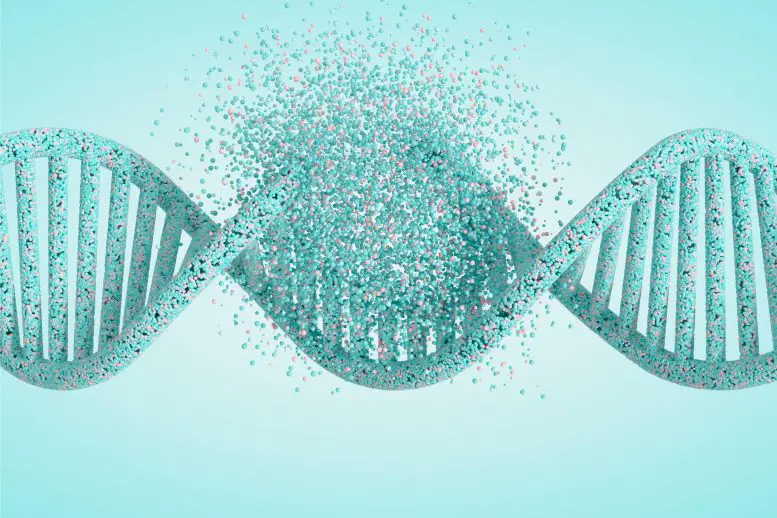Molecules often have a structural asymmetry called chirality; This means they can appear in alternative, mirror-image versions, similar to the left and right versions of the human hand. One of the great mysteries about the origin of life on Earth is that nearly all basic biological molecules, such as the building blocks of proteins and DNA, occur in only a single chiral form.
In two high-profile studies, Scripps Research chemists have proposed an elegant solution to this mystery, showing how this unilaterality, or “homochrality,” may be established in biology.
The research was published on: Proceedings of the National Academy of Sciences February 5, 2024 and later Nature February 28, 2024. Together they suggest that the emergence of homochirality is largely due to a chemical phenomenon called kinetic solubility; where one chiral form becomes more abundant than the other due to faster production and/or slower depletion.
“There have been many suggestions for how homochirality arises in specific molecules, such as certain amino acids, but what we really needed was a more general theory,” says Donna Blackmond, Ph.D., John C. Martin professor and chair. Chairman of the Scripps Department of Chemistry Research, who oversaw both studies.
Graduate student Jinhan Yu and research assistant Ming Deng, Ph.D., were first authors of the two studies.
Homochirality puzzle
“Origin of life” chemistry has been a vibrant field for much of the past century. Their experiments revealed dozens of fundamental reactions that likely occurred on early “prebiotic” Earth to produce the first DNA, RNA, sugars, amino acids, and other life-supporting molecules. However, this body of work lacks a plausible prebiotic theory of the origin of homochirality.
“There is a tendency in this field to ignore the issue of chirality when looking for possible reactions that could create the first biological molecules,” says Blackmond. “It’s frustrating because without reactions that promote homochirality, we would have no life.”
Common chemical reactions that form chiral molecules tend to yield equal (“racemic”) mixtures of left- and right-handed forms. Outside of biology this admixture is generally unimportant, as the two forms often have similar or identical characteristics. However, in biology, as a result of high homochirality, it is often the case that only the left- or right-handed form of a chiral molecule has useful properties; the other may be inert or even toxic. Therefore, cells often direct reactions to produce specific chiral forms using highly evolved enzymes.
However, on a prebiotic Earth, such enzymes would not be found; So how did homochirality arise?
A paradoxical result
In his research Proceedings of the National Academy of Sciences Blackmond and his team addressed this problem with amino acids. These small organic molecules are used as building blocks of proteins by all living things on Earth, but in biology they exist only in the left-handed chiral form.
Specifically, researchers sought to recreate homochirality in a central amino acid production process called transamination using relatively simple, reasonable prebiotic chemistry that eliminates complex enzymes.
In initial tests, the team’s experimental reaction worked, producing amino acids enriched in one chiral form compared to the other. The problem was that the preferred shape was the right hand; A form that biology does not use.
“We were stuck for a while, but then the light bulb went off; we realized we could reverse part of the reaction,” Blackmond says.
When they did this, the reaction often no longer produced the correct amino acids. In a striking example of kinetic solubility, it instead consumed the right-handed versions, leaving behind more of the desired left-handed amino acids. Thus, it became a plausible route to homochirality of amino acids used in living cells.
connecting everything together
For research Nature Chemists have investigated the simple reaction that enabled amino acids in the earliest forms of life to bind to the first short proteins (also known as peptides). The reaction had previously been published by another researcher, but its ability to produce homochiral peptides from racemic or racemic mixtures of amino acids had never been investigated.
Chemists once again encountered an insurmountable obstacle: They discovered that in the formation of peptide chains consisting of amino acids, the reaction to attach left-handed amino acids to right-handed amino acids occurs faster than the opposite of the desired homochiral peptides. .
Despite this, the team resisted. Ultimately, they found that when one type of amino acid in the original amino acid pool had a moderate predominance of the left-handed form (as was also plausible in another study), the reaction rate was faster for left-to-right connections. preferentially right-handed amino acids were depleted, leaving increasingly concentrated left-handed amino acids. In addition, left-right-left-right peptides had a stronger tendency to aggregate and fall out of solution as solids. This phenomenon associated with kinetic separation thus led to a surprisingly pure solution composed almost entirely of left-handed peptides.
According to Blackmond, the seemingly paradoxical mechanisms revealed in these studies offer the first convincing and comprehensive explanation of the emergence of homochirality; Blackmond says this explanation probably works not only for amino acids but also for DNA and other basic biological molecules such as DNA. RNA













